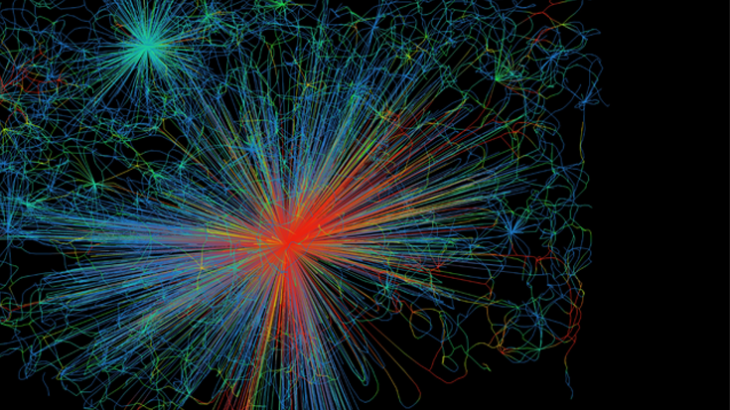Spotlight On: Electrochemical Innovation Lab (EIL) 3D Microscope

The SES ‘Spotlight On…’ series, showcases equipment at our institutions, providing information and case studies for interested researchers / industries and promoting better use of already available equipment.
The ZEISS Xradia 810 Ultra and Ultra Load Cell (for in-situ nano-mechanical testing, compression, tension, indentation stage) are 3D X-ray microscopes, which can achieve the highest spatial resolution achievable in a lab-based X-ray microscope (<100 nm in 3D) and the unique possibility of employing absorption and Zernike phase contrast imaging to characterise the widest range of samples.
The nano computed tomography (CT) instrument can be used to investigate the internal structure of a wide range of materials in a non-destructive way. Since X-rays penetrate most objects, the sample preparation requirements are less stringent than for TEM and unlike TEM or Focused Ion Beam Scanning Electron Microscopy, the specimens for X-ray microscopy are not “sliced” prior to, or during imaging – consequently it is possible to extend these investigations into the 4th dimension, to explore the evolution of 3D microstructure with time.
Scientists and engineers from different disciplines ranging from chemical engineering, chemistry, materials science, biological sciences, earth sciences to archaeology and cultural heritage represent the main group of users.
The output of the analysis is a 3D volume of the investigated sample. The microscope is accessible to users from both academia and industry and where required we can offer a full service, where samples can be sent to our laboratory and our personnel will analyse the specimens and produce the output results.
UCL’s Electrochemical Innovation Lab (EIL) is now part of the NXCT consortium. Launched in November 2020, the UK’s National Research Facility for lab-based X-ray Computed Tomography is investing in new CT scanning capability to build on existing facilities and expertise – from the Universities of Manchester, Southampton, Warwick, University College London (UCL), and Diamond Light Source – to deliver unparalleled 3D imaging capability for the UK.
“With the Zeiss Xradia 810 Ultra we can accomplish non-destructive 3D imaging with spatial resolution comparable to the synchrotron sources, achieving important results in a range of disciplines including chemical engineering, materials sciences and earth sciences”
Francesco Iacoviello, Electrochemical Innovation Lab (EIL), Chemical Engineering, UCL
Names of Equipment
- ZEISS Xradia 810 Ultra
- Zeiss Xradia 810 Ultra Load Cell
- ZEISS Xradia Versa 620
- Three X-ray CT scanners
- Nikon XTH 225
Current Research:
- Porous electrode materials for fuel cells
- Novel materials for next generation batteries.
- Geological and shale samples are being investigated to characterise their porosity and permeability
- Micro and nano-meteorites for characterizing their internal structure and characterization of new materials in the field of mineralomics
- Chromatography bead structural characterization of agarose, cellulose and ceramic materials
- Understanding mass transport mechanisms in oxygen transport membrane porous support layers
Who has access?
Anyone can request access to all X-ray CT instruments and rigs via the online application form
Any SLAs or standards (eg ISO, ..) associated with the facility?
None
Does it require an on-site visit to use the facility/equipment?
It is not mandatory, but highly recommended
Are there costs associated / fees? Please explain.
Access charges for all facilities are calculated using TRAC (transparent approach to costing). Each piece of equipment has a daily charge rate. Please contact the facility for prices for individual scanners, rigs and computing/software access via the enquiry form.
Can it be bought as a service with access to a team of experts?
We support and train academic researchers to become independent users and are happy to discuss collaborations. For industry users, we are able to offer customized packages including experimental design, sample preparation and data analysis.
Related publications and articles
- A Multiscale XŠ\Ray Tomography Study of the CycledŠ\Induced Degradation in Magnesium¨CSulfur Batteries (2021) (https://doi.org/10.1002/smtd.202001193)
- 3D Imaging of Lithium Protrusions in SolidŠ\State Lithium Batteries using XŠ\Ray Computed Tomography (2020) (https://doi.org/10.1002/adfm.202007564)
- The Imaging Resolution and Knudsen Effect on the Mass Transport of Shale Gas Assisted by Multi-length Scale X-Ray Computed Tomography (2019) (https://www.nature.com/articles/s41598-019-55999-7)
- The multiscale hierarchical structure of Heloderma suspectum osteoderms and their mechanical properties (2020) (https://doi.org/10.1016/j.actbio.2020.02.029)
- Rapid Preparation of Geometrically Optimal Battery Electrode Samples for Nano Scale X-ray Characterisation (2020) (https://iopscience.iop.org/article/10.1149/1945-7111/ab80cd/meta)
- XŠ\ray NanoŠ\computed Tomography of Electrochemical Conversion in LithiumŠ\ion Battery (2019) (https://doi.org/10.1002/cssc.201901123)
Where is it located?
Electrochemical Innovation Lab
Department of Chemical Engineering
University College London
Torrington Place
London
WC1E 7JE
“The Zeiss Xradia 810 Ultra at UCL together with sample preparation techniques developed in the Electrochemical Innovation Lab have allowed us to examine battery microstructures with new detail, revealing 3D microstructure features that help explain battery electrode performance and suggest pathways to advance the next generation of batteries”
Kandler Smith, National Renewable Energy Laboratory (NREL)
Potential relevant disciplines:
Chemical Engineering, Chemistry, Material Science, Biochemical Engineering, Earth Science, Physics, Archaeology, Bio-engineering, X-ray microscopy, Biology, Energy Materials, porous media, Electronic materials, Catalysis.
Links:
Contacts:

Professor Paul Shearing
Department of Chemical Engineering, University College London.

Dr. Francesco Iacoviello
Experimental Manager in the EIL X-ray Imaging Facility. Department of Chemical Engineering, University College London.

